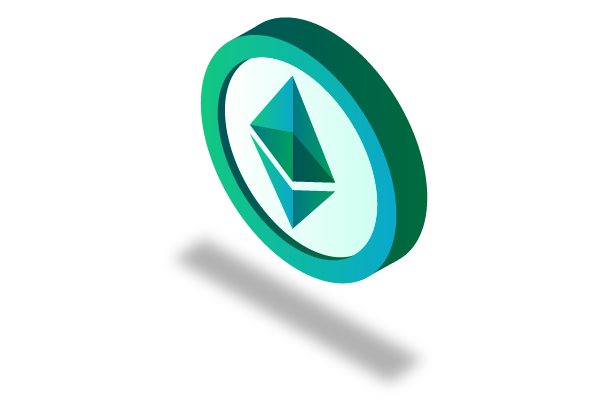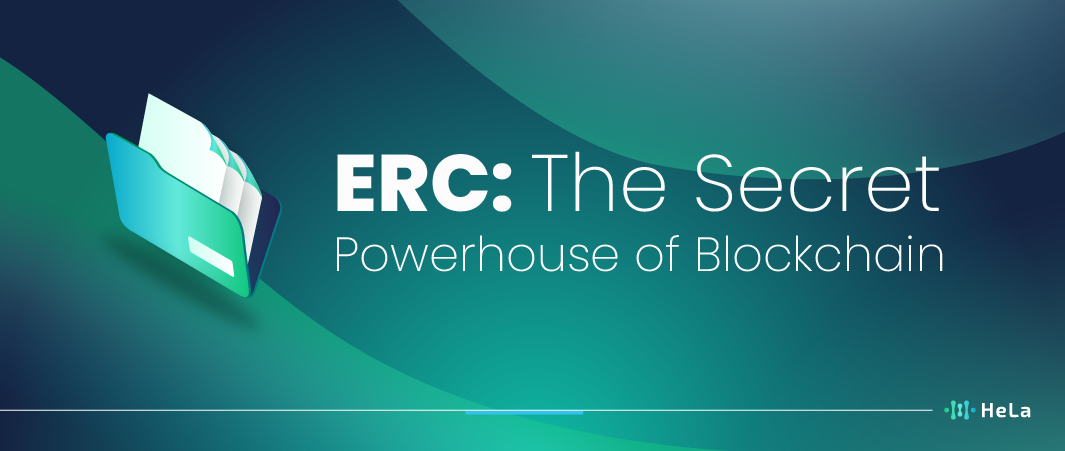In the vast realm of blockchain technology, few terms are as ubiquitous and crucial as “ERC”. While many associate blockchain with cryptocurrencies like Bitcoin and Ethereum, it’s the underlying protocols and standards, like ERC, that truly drive the innovation in this space. As we delve deeper into the world of decentralized applications and smart contracts, understanding the essence of ERC becomes paramount.
ERC, or Ethereum Request for Comments, represents a series of technical standards for the Ethereum blockchain. These standards ensure that various tokens and projects can interact seamlessly, fostering a more cohesive and interoperable ecosystem. This article aims to shed light on the significance of ERC, its various types, and its impact on the blockchain world.
What is ERC?

Before diving deeper into the intricacies of the Ethereum platform and its various standards, it’s essential to understand the fundamental concept of ERC. ERC stands for “Ethereum Request for Comment.” At its core, an ERC is a technical document that developers within the Ethereum community produce. These documents contain protocols, suggestions, and standards that the community can review, comment on, and eventually adopt.
The “Request for Comment” aspect of ERC is crucial. It implies that these are not mandates or edicts but rather collaborative proposals. They are open to feedback, adjustments, and improvements. Once an ERC gains enough traction and undergoes rigorous scrutiny, it can become a standard adopted by the broader Ethereum community. This process ensures that the Ethereum platform remains dynamic, adaptable, and community-driven.
The beauty of ERCs lies in their ability to foster innovation while maintaining a level of standardization. By providing a framework for developers to propose and discuss new ideas, the Ethereum platform can continually evolve, ensuring it remains at the forefront of blockchain technology.
Also Read: 6 Leading Ethereum Killer in 2023
The Most Prominent ERC Standards

While there are numerous ERC standards, a few have gained significant traction and are widely recognized in the blockchain community:
1. ERC-20
ERC-20 is like a universal rulebook for tokens on Ethereum, making sure they play nicely with other apps and places. It’s a set of guidelines that Ethereum tokens follow, so they can be used together in one wallet and traded on different websites without any hiccups. This is why many tokens on Ethereum can be kept in the same wallet and traded on lots of different exchanges.
2. ERC-721
Unlike ERC-20, which is used for tokens that can be exchanged on a one-to-one basis, like regular money, ERC-721 is designed for tokens that are special and one-of-a-kind, such as rare digital collectibles or unique pieces of digital art. Each ERC-721 token is like a digital snowflake, completely unique and distinct from others, making them perfect for proving ownership of exclusive digital items in the online realm. So, while ERC-20 tokens are like identical coins, ERC-721 tokens are more like digital certificates of authenticity for your one-of-a-kind digital treasures.
3. ERC-1155
ERC-1155 is a newer standard that’s made things easier in the world of digital tokens. You see, it lets you create both kinds of tokens, the ones that are the same and the ones that are unique, all in one place. This makes it simpler and cheaper when you want to make different types of tokens without needing lots of separate setups. It’s like having a single toolbox with all the tools you need, instead of carrying around a bunch of different ones for each job.
The Impact of ERC on Decentralized Finance (DeFi)

DeFi, short for Decentralized Finance, is a rapidly growing sector in the world of blockchain technology. Its main goal is to recreate traditional financial systems but without the need for middlemen like banks or financial institutions. A big reason behind the success of DeFi is the introduction of ERC standards, particularly ERC-20. This standard has played a vital role in the DeFi boom by providing a common way to create digital tokens. Thanks to ERC-20, we’ve seen the emergence of lending platforms, stablecoins (which are cryptocurrencies with stable values), and opportunities like yield farming, where people can earn returns on their crypto holdings. What’s really cool is that these tokens are highly interoperable, meaning they can easily move between different DeFi platforms for trading, staking (which is like putting your crypto to work to earn more), or even using them as collateral for loans. It’s like having a universal language for digital assets in the DeFi world, making things super convenient for users.
In essence, DeFi is all about making finance more accessible and efficient for everyone. It’s like a financial revolution happening on the blockchain, where people have more control over their money and can participate in various financial activities without relying on traditional banks or financial intermediaries. ERC-20, with its token standardization, has been a key building block in this exciting journey, enabling the seamless exchange and use of tokens across different DeFi platforms. So, if you’re looking to explore the world of DeFi, ERC-20 is definitely something you’ll come across a lot, and it’s making decentralized finance more user-friendly than ever.
The Future of ERC and Blockchain
As blockchain technology keeps on advancing, the ERC standards are likely to evolve too. Especially with the upcoming Ethereum 2.0 upgrade and the increasing interest in Layer 2 solutions, we can expect new ERC proposals that adapt to these changes. Additionally, as more people around the world become aware of the potential of blockchain, there’s going to be a growing demand for common rules and practices. These ERC standards are going to be crucial in making sure that the decentralized future is smooth, works together seamlessly, and is accessible for everyone.
Also Read: What is a Smart Contracts in Blockchain?
Imagine these ERC standards as the building blocks of the blockchain world. They are like the rules that everyone agrees upon so that different projects and applications can communicate and work together effectively. With these standards in place, it’s easier for developers to create new and exciting blockchain-based solutions, and for users to navigate this emerging technology. So, as blockchain technology continues to expand and reach more people, these ERC standards will be the glue that holds everything together, making sure it’s user-friendly and interconnected.
Conclusion
The world of blockchain is vast and intricate, with myriad protocols, tokens, and applications. Yet, at its core, the essence of its success lies in standards like ERC. These standards not only ensure that different projects and tokens can coexist harmoniously but also pave the way for future innovations. As we stand on the cusp of a decentralized future, understanding and appreciating the role of ERC becomes more crucial than ever.
In the end, while the allure of blockchain often lies in its groundbreaking applications and revolutionary potential, it’s the foundational elements like ERC that truly hold the key to its success. As we continue to explore and harness the power of blockchain, the significance of ERC will remain undeniable.
Disclaimer: The information provided by HeLa Labs in this article is intended for general informational purposes and does not reflect the company’s opinion. It is not intended as investment advice or recommendations. Readers are strongly advised to conduct their own thorough research and consult with a qualified financial advisor before making any financial decisions.

Joshua Soriano
I am a writer specializing in decentralized systems, digital assets, and Web3 innovation. I develop research-driven explainers, case studies, and thought leadership that connect blockchain infrastructure, smart contract design, and tokenization models to real-world outcomes.
My work focuses on translating complex technical concepts into clear, actionable narratives for builders, businesses, and investors, highlighting transparency, security, and operational efficiency. Each piece blends primary-source research, protocol documentation, and practitioner insights to surface what matters for adoption and risk reduction, helping teams make informed decisions with precise, accessible content.
- Joshua Soriano#molongui-disabled-link
- Joshua Soriano#molongui-disabled-link
- Joshua Soriano#molongui-disabled-link
- Joshua Soriano#molongui-disabled-link

